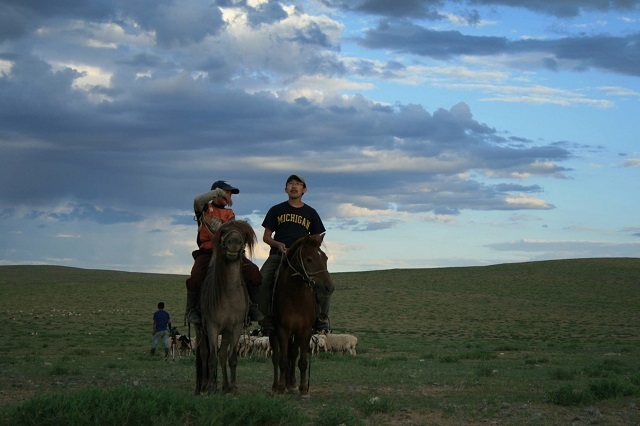新任スタッフ紹介 44
Self-introduction

BADAGAROV, Zhargal Bayandalaevich
(2015年9月外国人研究員着任)
My name is Jargal Badagarov. I am a visiting researcher at ILCAA and will stay here until the end of March 2016. My main area of interest is historical development of Mongolic languages and their relation to other Altaic languages. My PhD thesis was on Dagur and Buryat linguistic connections. Both languages belong are Mongolic and exhibit some peculiar common features which draws them closer together within the phylum. A detailed comparison at phonological and grammatical levels showed that these common features are mostly due to later contacts either direct or most probably indirect, mediated by other Mongolic languages and dialects or neighboring Tungusic languages of the North-Eastern areas of Mongolic ecumene. The results of this research will be used to further investigate connections between individual Mongolic languages especially in regard with areal influence on each other.
Another point of interest in diachronic study of Mongolic languages is various grammaticalization phenomena especially viewed in areal perspective. I believe that grammaticalization has been playing major role in diachronic variation of Mongolic. These phenomena are still understudied and require more detailed description and analyses. To approach that I will focus on verbs and try to investigate grammaticalization of existential verbs in diachronic perspective and tense forms with emphasis on Northern Mongolic, including Buryat and Dagur.
It is well known that ‘Altaic’ type languages mostly have Non-Past and Past verbal tenses. Anyone who approaches Mongolic through philological studies or through Modern Mongolian (of Mongolia or Inner Mongolia) is inclined to think so and extrapolate gained knowledge to other Mongolic languages, including Buryat. However Buryat along with some other related languages has a morphologically and syntactically explicit category of Future tense. I argue that Buryat has pure temporal semantic division between Immediate (S,R — E) and General (S — R, E) Future. It is also interesting to find out the possible pathways which led to such grammatical bifurcation of Non-Past tense in Buryat.
Modern Mongolic languages as well as Mongolic written monuments of different periods demonstrate at least three historically attested verbs meaning ‘to be’, namely *a-, *bü-, and bayi-, whose grammaticalization led to consequent development of diverse system of morphological elements including particles and affixes with various grammatical and pragmatic meanings. The verb bayi- ‘to be’, common to the most of the modern Mongolic languages, also shows different degrees of grammaticalization from an auxiliary to the suffix. It is therefore necessary to observe grammaticalization patterns of the various verbs ‘to be’ in Buryat drawing when necessary examples from other Mongolic languages.
During my stay at ILCAA, TUFS, I would like to deepen my understanding of quantitative methods and use of linguistic databases in research. Using available textual data in Mongolic languages I hope to set up a framework for linguistic analyses of Northern Mongolic languages, which will streamline analysis process and production of research papers.
Copyright © 2010 Research Institute for Languages and Cultures of Asia and Africa. All Rights Reserved.
